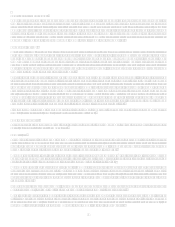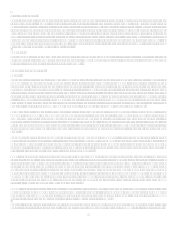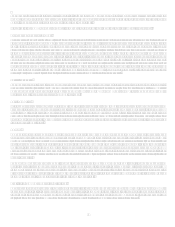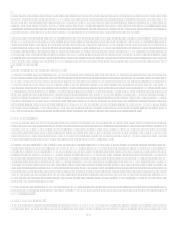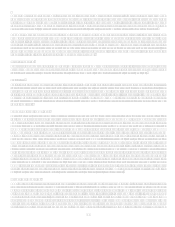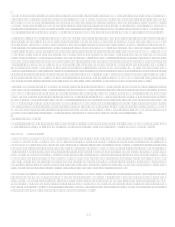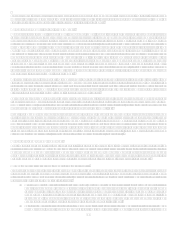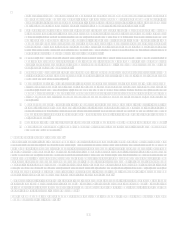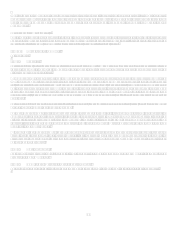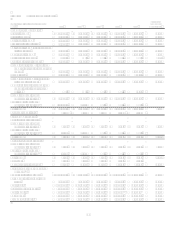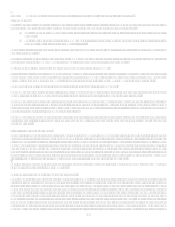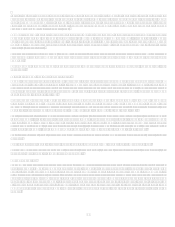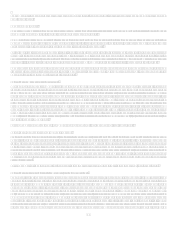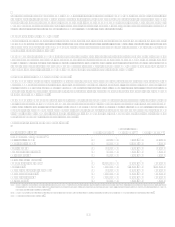Capital One 2007 Annual Report Download - page 39
Download and view the complete annual report
Please find page 39 of the 2007 Capital One annual report below. You can navigate through the pages in the report by either clicking on the pages listed below, or by using the keyword search tool below to find specific information within the annual report.17
financial, structural and operational penalties, including receivership. In addition, establishing systems and processes to achieve
compliance with these laws and regulations may increase our costs and/or limit our ability to pursue certain business opportunities. As
our business grows in size and complexity, establishing systems and processes to achieve compliance may become more difficult and
costly. We face additional compliance challenges as a result of our acquisition of North Fork, which may be more costly and/or
require more management attention than we anticipate. In addition, we face similar risks with respect to our international businesses,
where changing laws and regulations may have an adverse impact on our results. For a description of the laws and regulations to
which we are subject, please refer to Supervision and Regulation in Item 1. The regulatory environment in which we operate could
have a negative impact on our business and our financial results.
We Face the Risk of Fluctuations in Our Expenses and Other Costs that May Hurt Our Financial Results
Our expenses and other costs, such as operating, labor and marketing expenses, directly affect our earnings results. In light of the
extremely competitive environment in which we operate, and because the size and scale of many of our competitors provide them with
increased operational efficiencies, it is important that we are able to successfully manage our expenses. Many factors can influence the
amount of our expenses, as well as how quickly they may increase. Investments in infrastructure, which may be necessary to maintain
a competitive business, may increase operational expenses in the short-run. As our business develops, changes or expands, additional
expenses can arise from management of outsourced services, asset purchases, structural reorganization, a reevaluation of business
strategies and/or expenses to comply with new or changing laws or regulations. Integration of acquired entities may also increase our
expenses, and we may be less able to predict the operational expenses of newly acquired businesses. If we are unable to successfully
manage our expenses, our financial results will suffer.
Reputational Risk and Social Factors May Impact our Results
Our ability to originate and maintain accounts is highly dependent upon the perceptions of consumer and commercial borrowers and
deposit holders and other external perceptions of our business practices and/or our financial health. Adverse perceptions regarding our
reputation in the consumer, commercial and funding markets could lead to difficulties in generating and maintaining accounts as well
as in financing them. Particularly, negative perceptions regarding our reputation could lead to decreases in the levels of deposits that
consumer and commercial customers and potential customers choose to maintain with us. In addition, adverse developments or
perceptions regarding the practices of our competitors, or our industry as a whole, may also negatively impact our reputation. Finally,
negative perceptions regarding the reputations of third parties with whom we have important relationships, such as our independent
auditors, also may adversely impact our reputation. Adverse impacts on our reputation, or the reputation of our industry, could result
in greater regulatory and/or legislative scrutiny, which may lead to laws or regulations that may change or constrain the manner in
which we engage with our customers and the products we offer them. For example, in 2007 the credit card and mortgage industries
have faced increased legislative scrutiny. Adverse reputational impacts or events also may increase our litigation risk. See The Credit
Card Industry Faces Increased Litigation Risks Relating to Industry Structure.
In addition, a variety of social factors may cause changes in credit card and other consumer finance use, payment patterns and the rate
of defaults by accountholders and borrowers domestically and internationally. These social factors include changes in consumer
confidence levels, the publics perception of the use of credit cards and other consumer debt, and changing attitudes about incurring
debt and the stigma of personal bankruptcy.
We May Face Limited Availability of Financing, Variation in Our Funding Costs and Uncertainty in Our Securitization
Financing
In general, the amount, type and cost of our funding, including financing from other financial institutions, the capital markets and
deposits, directly impact our expenses in operating our businesses and growing our assets and therefore, can positively or negatively
affect our financial results.
A number of factors could make such financing more difficult, more expensive or unavailable on any terms both domestically and
internationally (where funding transactions may be on terms more or less favorable than in the United States), including, but not
limited to, financial results and losses, specific events that adversely impact our reputation, disruptions in the capital markets, specific
events that adversely impact the financial services industry, counter-party availability, interest rate fluctuations, rating agencies
actions, and the general state of the U.S. and world economies. Also, because we depend on the capital markets for funding and
capital, we could experience reduced availability and increased cost of funding if our debt ratings were lowered. Also, we compete for
funding with other banks, savings banks and similar companies, some of which are publicly traded. Many of these institutions are
substantially larger, may have more capital and other resources and may have better debt ratings than we do. In addition, as some of
these competitors consolidate with other financial institutions, these advantages may increase. Competition from these institutions
may increase our cost of funds.
As part of our capital markets financing, we securitize a portion of our consumer loans. The occurrence of certain events may cause
the securitization transactions to amortize earlier than scheduled, which would accelerate the need for additional funding. This early


